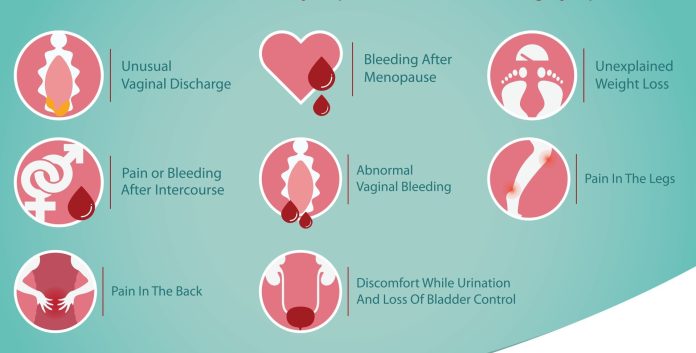Governments, donors, multilateral institutions, and partners on Wednesday [today] announced major new policy, programmatic and financial commitments, including nearly $600 million in new funding, to eliminate cervical cancer.
If these ambitions to expand vaccine coverage and strengthen screening and treatment programs are fully realized, the world could eliminate a cancer for the first time.
These commitments were made at the first-ever Global Cervical Cancer Elimination Forum: Advancing the Call to Action, in Cartagena de Indias, Colombia, to catalyze national and global momentum to end this preventable disease.
Every two minutes, a woman dies from cervical cancer, although the knowledge and the tools to prevent and even eliminate this disease already exist. Vaccination against human papillomavirus (HPV) — the leading cause of cervical cancer — can prevent the vast majority of cases and, combined with screening and treatment, provides a path to elimination.
Every two minutes, a woman dies from cervical cancer, although the knowledge and the tools to prevent and even eliminate this disease already exist
Cervical cancer is the fourth most common cancer in women worldwide, and continues to disproportionately impact women and their families in low- and middle-income countries (LMICs). In an important shift, the World Health Organization (WHO)’s 2022 global recommendation for one-dose HPV vaccine schedules significantly reduced barriers to scaling up vaccination programs.
It was reinforced by a similar recommendation in the Americas Region in 2023. The WHO’s Regional Office for Africa has just followed suit with its own recommendation for countries in the region to adopt the single-dose vaccination schedule. To date, 37 countries have reported switching or an intent to switch to a one-dose regimen.
The commitments announced at the forum mark a watershed moment to accelerate progress on a promise made in 2020, when 194 countries adopted WHO’s global strategy to eliminate cervical cancer.
Vaccination against HPV — the leading cause of cervical cancer — can prevent the vast majority of cases and, combined with screening and treatment, provides a path to elimination
“We have the knowledge and the tools to make cervical cancer history, but vaccination, screening and treatment programmes are still not reaching the scale required,” said Dr. Tedros Adhanom Ghebreyesus, WHO Director-General.
“This first global forum is an important opportunity for governments and partners to invest in the global elimination strategy and addressing the inequities that deny women and girls’ access to the life-saving tools they need.”
In addition to a re-commitment by Indonesia to its National Action Plan 2023, other country commitments include:
Democratic Republic of the Congo commits to start introducing the HPV vaccine as early as possible using the WHO-recommended single-dose schedule. It also commits to do everything to get, as early as possible, to the cervical cancer elimination strategy immunization’s coverage target for girls aged 9 to 14 years.
Cervical cancer is the fourth most common cancer in women worldwide, and continues to disproportionately impact women and their families in low- and middle-income countries
Ethiopia commits to implement a robust vaccine delivery strategy across the country, targeting at least 95% coverage in 2024 for all 14-year old girls, regardless of their socioeconomic status, whether in school or out of school.
The country also commits to screen 1 million eligible women every year for cervical cancer and to treat 90% of those screened, who present with positive precancerous lesions.
Further, HPV single dose has been approved to be introduced this year and scaled up as part of the country’s Expanded Program on Immunization plans.
Nigeria launched its HPV vaccine national program this year, adopting the single-dose schedule for girls 9 to 14 years old, and now commits to achieving at least 80% vaccine coverage of girls.
They are committed to continuing to increase coverage of the HPV vaccine through a robust delivery strategy that will meet the girls where they are.
The nearly $600m in new funding includes $180m from the Bill & Melinda Gates Foundation, $10m from UNICEF, and $400m from the World Bank
For girls who are in school, they will concentrate on school-based delivery; for girls that are not in school, they will commit to implementing outreach activities at key moments in the year, with the target of at least 80% coverage of girls targeted by 2026.
The nearly $600m in new funding includes $180m from the Bill & Melinda Gates Foundation, $10m from UNICEF, and $400m from the World Bank. A full list and description of commitments can be found here and will be updated throughout the forum.
There are many challenges on the path to elimination. Due to supply constraints, delivery challenges, and the COVID-19 pandemic, just one in five eligible adolescent girls were vaccinated in 2022.
And while there are cost-effective and evidence-based tools for screening and treatment, fewer than 5% of women in many LMICs are ever screened for cervical cancer. Health system constraints, costs, logistical issues, and lack of political will are obstacles to implementing comprehensive programs for cervical cancer prevention and treatment.
These barriers have led to deep inequity: of the estimated 348,000 cervical cancer deaths in 2022, over 90% took place in LMICs. With governments and partners recommitting urgently to the global agenda, it is possible to reverse the tide and prevent annual deaths from rising to 410,000 by 2030, as currently estimated.


